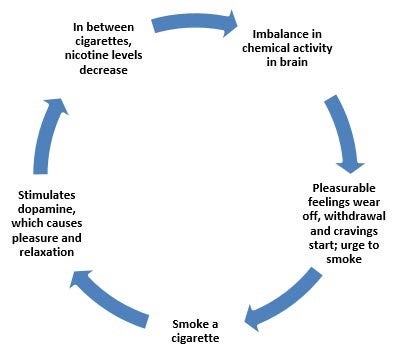Tobacco smoking is the leading cause of preventable death in the United States. Every year, tobacco kills about 450,000 Americans and nearly seven million people worldwide. Despite 50 years of warnings on the dangers of smoking, nearly 34 million adults continue to smoke cigarettes and only about 6% of smokers successfully quit each year.
With supportive programs and medication, however, the chances of successfully quitting can more than double. BMC is committed to delivering the most effective and practical smoking cessation interventions possible to increase an individual’s chance of quitting.
Health Benefits of Quitting:
2 weeks to 3 months after quitting: Circulation improves and lung function increases.
(US Surgeon General’s Report, 1990, pp.193, 194,196, 285, 323)
1 to 9 months after quitting: Coughing and shortness of breath decrease as cilia regain function.
(US Surgeon General’s Report, 1990, pp. 285-287, 304)
1 year after quitting: Risk of coronary heart disease is cut in half after one year, compared to continuing smokers.
(US Surgeon General’s Report, 2010, p. 359)
5 years after quitting: Risk of cancer of the mouth, throat, esophagus, and bladder are cut in half. Cervical cancer risk falls to that of a non-smoker. Stroke risk falls to that of a non-smoker after 2-5 years.
(A Report of the Surgeon General: How Tobacco Smoke Causes Disease - The Biology and Behavioral Basis for Smoking-Attributable Disease Fact Sheet, 2010; and Tobacco Control: Reversal of Risk After Quitting Smoking. IARC Handbooks of Cancer Prevention, Vol. 11. 2007, p 341)
10 years after quitting: Risk of lung cancer is cut in half, and continues to decline.
(A Report of the Surgeon General: How Tobacco Smoke Causes Disease - The Biology and Behavioral Basis for Smoking-Attributable Disease Fact Sheet, 2010; and US Surgeon General’s Report, 1990, pp. vi, 155, 165)
15 years after quitting: The risk of coronary heart disease is the same as a non-smoker’s.
(Tobacco Control: Reversal of Risk after Quitting Smoking. IARC Handbooks of Cancer Prevention, Vol. 11. 2007. p 11)
Why is it so hard to quit? Nicotine Dependence Cycle

 en
en 
 Français
Français Deutsch
Deutsch Italiano
Italiano Español
Español Tiếng Việt
Tiếng Việt Kreyol ayisyen
Kreyol ayisyen